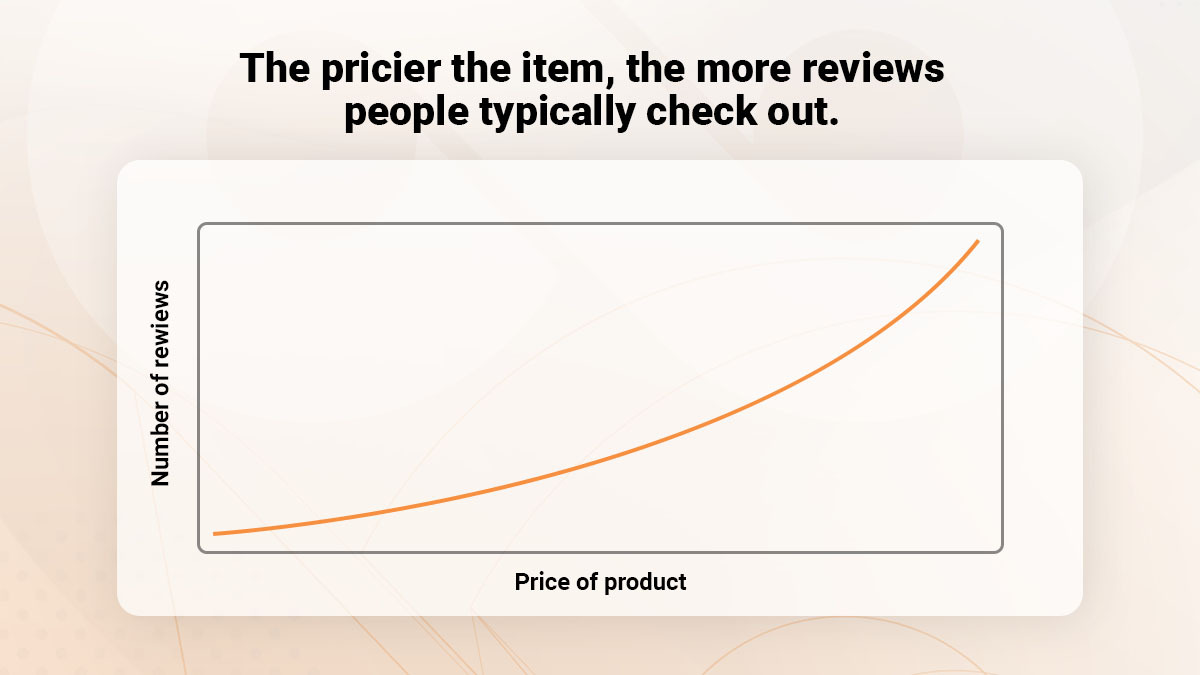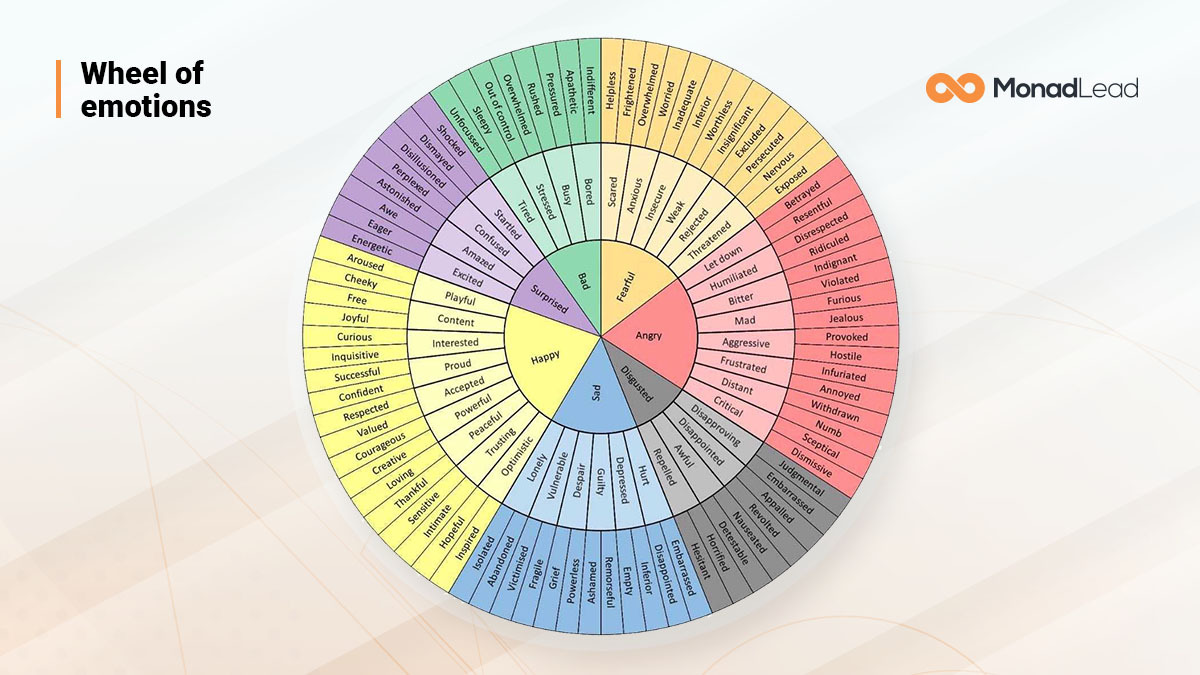Picture this: it's a regular morning, you're heading to work, and amidst the traffic, you graciously allow an elderly woman to merge in front of you. That genuine smile she gives you? It's like a transaction in a store—you offered a kindness, and she paid with appreciation.
In our daily lives, everything seems like a form of trade, whether it's a direct monetary exchange or something subtler. All trades have a giver and a receiver. When it comes to purchasing decisions, confidence plays a crucial role. Product reviews emerge as a key factor in instilling that confidence.
According to research from Power of Reviews, a staggering 95% of customers delve into product reviews before committing to a purchase. Remarkably, a quarter of them do so before every single purchase.
In the realm of affiliate marketing, having a robust review is as vital as the product itself. Why? Because the narrative sells.
Consider platforms like Fiverr, where the going rate for a content writer's expertise indicates that crafting a thorough, compelling review (solely in terms of writing) requires an investment of around $100*.
What is a product review?
A product review serves as a deliberate or unintentional piece of creative content, offering a comprehensive exploration of a product's advantages, disadvantages, purpose, and presentation—essentially, a firsthand encounter shared with potential customers.
In the landscape of today's connected world, product reviews have seamlessly woven themselves into the fabric of the shopping experience. Everyone seeks the distilled experiences that a particular purchase brings, turning reviews into sought-after resources.
Influence, thy name is "reviews." In the current consumer landscape, they stand as a pivotal factor, wielding significant power in the decision-making process of potential buyers.
 Examining the graph above, a clear pattern emerges: the more substantial the investment in an item, the greater the inclination to delve into reviews, seeking assurance and insights.
Examining the graph above, a clear pattern emerges: the more substantial the investment in an item, the greater the inclination to delve into reviews, seeking assurance and insights.
In essence, a product review can be defined as a brief yet comprehensive account detailing the features, positives, and negatives of a specific product. Its significance is paramount, acting as a decisive factor in the ultimate decision of whether someone will make a purchase.
For those pondering how to craft a purposeful review or what to anticipate when seeking one, you're in the right place. We've delved into these intricacies, drawing from our own experiences and distilling various numbers and parameters into the simplest of tips. Stick around for valuable insights!
What is the purpose of a product review?
The essence of a product review can be encapsulated in a single word—Truth. In our modern world, teeming with uncertainty, customers seek precisely the truth about what they intend to purchase. As we previously discussed targeting audiences, the next step is to present them with reviews that are not just honest and accurate but also infused with the emotion relevant to your industry. Unsure about the emotion? Here's a wheel of emotions for your reference, a tool we'll delve into more in the future.
 Understanding the emotional triggers of your customers is a mark of a serious businessperson. If you're uncertain, fear not; you're in the right place, demonstrating a willingness to explore.
Understanding the emotional triggers of your customers is a mark of a serious businessperson. If you're uncertain, fear not; you're in the right place, demonstrating a willingness to explore.
Beyond being sources of truth and emotion, product reviews fulfill the classic role of presenting a product. A significant portion of review seekers already possess firsthand experience with the product, yet they seek reviews to uncover additional features or variations.
Now, the skeptic might question the trustworthiness of reviews. An excellent question indeed. Surprisingly, those under 45 years old trust product descriptions more than recommendations from friends or family. And for those still in doubt, consider this: over 60% of young adults aged 18-23 exclusively seek products and shops with product reviews. Trust in reviews is not just a trend; it's a fundamental element of the modern consumer landscape.
What types of product reviews do we have?
When it comes to product reviews, the diversity is impressive. Let's break it down based on the expertise of those behind the reviews:
- Industry Professional Descriptions: Crafted by experts within a specific industry, these reviews delve deep into the intricacies of products, drawing from professional experience. Their value is unparalleled, often stemming from seasoned buyers within the field.
- Marketing Reviews: Penned by marketing experts and others with a knack for positive brand representation, these reviews aim to showcase products or services in the best light. The goal is to enhance the overall brand image.
- User Reviews: Shared by individuals who have already made a purchase or used a service, user reviews hold a unique value. Their willingness to share experiences with like-minded individuals adds an authentic touch.
- Blogger and Influencer Reviews: Created by bloggers or influencers as part of their business or partnerships, these reviews bring a personal touch. As users themselves, they share their experiences with a dedicated audience.
- Affiliate Reviews: The result of collaborations between a brand and an affiliate, these reviews are often positive and laser-focused on key selling points. They emerge from strategic partnerships, aiming to target specific audiences effectively.
Understanding the nuances of each type of review allows businesses to leverage them strategically, recognizing the diverse ways in which consumers seek information and make purchasing decisions.
How to get ready to write product reviews
Preparing to write product reviews is akin to laying the foundation for a strong structure. Here are some essential steps to get ready:
- Harness the Power of Google: Dive into research, and let Google be your guide. Understanding the competition is crucial to ensuring your reviews stand out. While automated content might seem tempting, especially with AI tools, it's important to note that replicating content can backfire, especially after the latest Google Core Update. The key is to stand out uniquely.
- Avoid the Shortcut Trap: While shortcuts might seem appealing, particularly in the realm of AI-generated content, they can be detrimental in the long run. The recent Google Core Update emphasizes the importance of authenticity and uniqueness. So, it's essential to distinguish your reviews in a way that sets them apart.
- Leverage the Internet's Open Market: Embrace the vastness of the Internet, recognizing it as a powerful tool in an open market. Some may argue that it's a double-edged sword, but those confident in their product and adept at presenting it through quality reviews understand its positive impact. In today's internet-dependent society, authenticity in reviews is recognized and appreciated.
- Honesty is the Best Policy: The modern consumer, well-versed in the ways of the internet, can discern between a genuine, honest review and one that isn't. Therefore, the key is to write reviews that reflect this sincerity. Utilize the insights gained from researching the competition to ensure your reviews cover all the essential aspects.
In essence, the preparation for writing product reviews involves a blend of research, uniqueness, and authenticity. Embracing these elements, your reviews can truly stand out in the crowded digital landscape.
How to write a product review?
Well, consider it a journey—one that, with a bit of prep and a checklist in hand, turns the process into something almost second nature.
Introducing the Product or Service
Your review's opening act is crucial. Think of it as a grand entrance. Use language that not only captures attention but boosts the confidence of those already intrigued. If possible, be hands-on with the product. Purchase it, experience it. And if it's a bit on the pricey side, don't hesitate to explore options with the folks behind it. Affiliates, don't forget to tap into those networks that often offer a helping hand, or in this case, a sample.
Still skeptical about the impact of this approach? Here's a challenge: pen two reviews—one for a product you've invested in and one you haven't. Present them to a third party and gauge which one resonates more—more meaning, more honesty, more emotion.
Your review is more than an evaluation; it's an opportunity to impart fresh insights. Share intriguing bits of wisdom that leave your audience craving more. After all, a review should be an enlightening experience, not just a verdict.
What to Avoid in the Introduction
Let's make one thing clear—an effective product review isn't a bland statement or a high school essay on a chair. Avoid the mundane. Forget the generic intros; they're as outdated as they are uninspiring.
Picture this: a review that begins with the mundane details of a chair. We all know we use chairs for sitting and such. It's true but boring. It lacks the spark that sets it apart from the masses cluttering the internet.
Crafting an Engaging Introduction
Now, consider a different approach. Meet the (Product Name) work chair—a true departure from the ordinary. This isn't your run-of-the-mill furniture; it's a game-changer. Forget about storing clothes; this chair is built for the daily grind. Remember those familiar aches after hours of sitting? Well, say goodbye to that. We're so confident that if you're not pain-free within a month, we're ready to refund your entire purchase.
Numbers add weight to words. How about this: 879 orders, only seven returns. And here's the kicker—five of those returns were because our courier couldn't find a lieutenant at the given address. The other two? Returned because our chair was so good, it relieved back pain.
In just a few sentences, this introduction establishes trust, highlights a unique selling point, and infuses emotion into the selling process. It also assures readers of a safety net with the possibility of returns if the product doesn't meet expectations. This approach elevates your review from mundane to compelling.
Define who the product is for
Much like how targeted advertisements need to reach the right audience, it's equally crucial in reviews to clearly define who the product isn't for. The more specific our niche, the more imperative this becomes.
What we advocate for is a unique approach. When individuals encounter ads or reviews that may not resonate with them, we encourage them to share these with those they believe could benefit. It taps into the inherent human desire to assist others—an exceptional form of marketing. When someone takes the initiative to forward your review to someone in need, the likelihood of your message reaching its intended recipient increases significantly.
Recognition is something people naturally appreciate, and it enhances their authority. By openly stating who our product isn't designed for, we demonstrate a commitment to social responsibility regarding their time. It sends a clear message that we value their time and won't engage in using it frivolously.
Present its advantages and disadvantages
People don't just buy products; they invest in solutions to their problems and improvements to their lives. Enumerating advantages alone won't cut it—providing real solutions is the key. And let's not forget, just as crucial as listing the pros is acknowledging the cons. Transparency builds trust.
In the world of savvy consumers, comprehensive information is king. It's not about concealing flaws; it's about presenting the full picture. Interestingly, listing drawbacks doesn't even rank in the top 5 reasons why potential buyers hesitate to make a purchase. Instead, it's about empowering customers with the knowledge they need to make informed decisions. After all, an informed decision is a confident decision.
SEO content optimization
The myth of "SEO is dead" resurfaces like clockwork after every Google Core Update, but the reality is quite the opposite. SEO optimization is not only alive and kicking but more crucial than ever. The key lies in understanding the evolving landscape and adapting strategies accordingly.
In the latest Google Core Update from August this year, the emphasis is clear—content that brings new, user-friendly experiences takes the lead in rankings. It's not about gaming the system but about providing value and enhancing user engagement.
The recipe for SEO success doesn't have to be overly complex. Take a cue from what people are already interested in within the narrow topics of your product or niche. Simplify the presentation, making it accessible and engaging. It's not about chasing algorithms; it's about meeting user needs and delivering content that resonates. In the ever-changing SEO game, adaptability and genuine user-centric content are the real winners.
Present all potential variations of a product
Simplicity is the key to a successful customer experience. As Donald Miller wisely puts it, "If you confuse, you lose." Leaving a customer in doubt, especially when presenting product variations, can lead to misunderstandings and negative experiences.
Effortless clarity is the goal. Don't risk confusing a customer by not presenting all the variations. It's about being simple, clear, and precise. When customers understand exactly what they're getting and can easily navigate their options, it enhances their overall satisfaction. A positive and straightforward experience is not only memorable but also builds trust, fostering long-term customer relationships.
Recommend alternative products
Not everyone reading a review is a potential customer, and that's perfectly fine. People appreciate authenticity, especially in the realm of commerce. Knowing your product isn't a universal fit is a mark of awareness and reality—it resonates with discerning consumers.
Addressing the price aspect is crucial. While you may believe your price is ideal, it's essential to acknowledge that it might not align with everyone's position. Some have firm budget constraints, and recognizing this reality is a step toward building trust.
Presenting this information can take various forms—a list, a table, or a straightforward comparison. Whichever format you choose, it's crucial to ensure it's responsive and user-friendly, catering to the diverse ways people access information.
This not only aligns with consumer preferences but also earns appreciation from Google bots. Offering alternatives demonstrates transparency and a commitment to helping consumers make informed decisions, a practice that both users and search engines value.
Summarize it all in one place
Never forget that your hottest customers are the ones ready to make a purchase. Cater to them just as diligently as you would to any other customer. For this group, simplicity is key—they seek a comprehensive overview of all factors in one place to swiftly make an informed purchase decision.
Crafting a dedicated list featuring both pros and cons is ideal for this audience. Alternatively, presenting the information in a table format is effective. However, ensure it remains responsive for various devices, adapting seamlessly to different screens. This ensures accessibility and convenience for your potential buyers, making their decision-making process smooth and efficient.
Conclusion
The art of effective marketing and product reviews hinges on simplicity, transparency, and adaptability. Recognizing the uniqueness of your audience, acknowledging limitations, and presenting information fosters trust and authenticity. SEO remains a dynamic force, with user-centric content and responsiveness taking center stage in the digital landscape.
Embracing simplicity in communication, from clearly defining target audiences to acknowledging who the product isn't for, adds authority and social responsibility to your brand. Encouraging users to share reviews with potential beneficiaries taps into the power of organic recommendations, fostering a community-driven approach to marketing.
In the realm of pricing and alternatives, transparently recognizing that a product may not fit every budget demonstrates an awareness of reality. Presenting alternatives in a user-friendly format caters to diverse preferences and aligns with the principles of accessibility and convenience.
Ultimately, the thread that ties these elements together is a commitment to providing valuable, straightforward, and user-centric experiences. In a world inundated with information, simplicity emerges as a powerful tool for building lasting connections with an audience.
Table of Content
Subscribe and follow











